the orange show center for visionary art's
eyeopener tours:
Wisconsin, Iowa, & Minnesota, 2004


"Cheese, Corn, Grottos, & Flies"
tour report by Marks Hinton
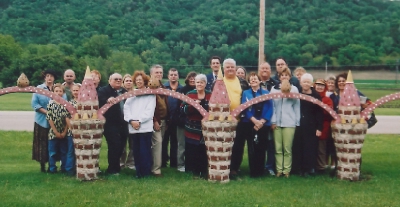
Well once again our Gonzo Guide Larry Harris outdid himself developing an Eyeopener Tour of the Upper Midwest that will no doubt make it into the Eyeopener Hall of Fame, located in a secret grotto modeled after the masterpieces of Frank Lloyd Wright, Louis Sullivan and Fred Smith, built by midwestern gnomes who maintain this sacred space and where the few, lucky participants who make this annual pilgrimage to the whimsical world where our acknowledged leader communicates with the denizens who inhabit it can receive perpetual redemption.
It started big and then went from arithmetic increases in the "Wow Factor" to geometric rises in the "Holy cow can you believe that?" The best quote of the tour and the one that says it all after visiting some of America's greatest architecture by our greatest architects was "I will never look at a building the same way ever again!"
Blasting off at the eyeopening hour of 5:15 A.M., our rugged little band hopped a flight to Minneapolis, capital of the Land of the Wind Chill Factor. Apparently one piece of luggage preferred the climate of Honolulu and took off on its own. Fortunately it was recaptured and 48 hours later was escorted to the Comfort Inn to be reunited with its owner.
Our first stop was for an exotic lunch of elk, bison, caribou and venison at Cabela's, an outdoorsman's paradise of trophy animal heads and bodies that if alive would fill the San Diego zoo. Then it was off to the fantastic National Farmer's Bank of Owatonna, Minnesota. This architectural jewel was designed by Chicago architect Louis Sullivan in 1909. It is known as a "Jewel Box" and anyone who sees it knows why.

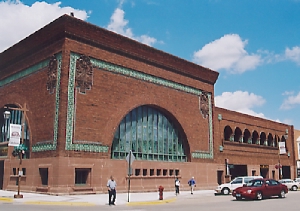
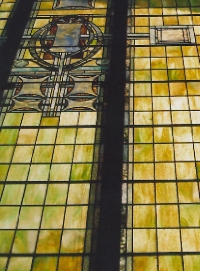
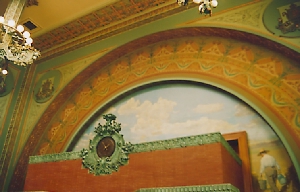
Louis Sullivan's National Farmer's Bank, Owatonna, Minnesota

Judyland was our next eyeopening experience. Judy Onofrio's two-story colonial style house looks like every other home in the neighborhood. But once you go inside and also visit the garden you know you "are not in Kansas anymore." The interior is chock-a-block with her sculptures. In addition one room is completely covered in mirrors, colorful rocks, bright plastic objects, etc. The hillside backyard is a maze of pathways leading past larger than life concrete sculptures such as totems, birds, a woman, memorials to her dearly departed pets and a giant tan cat.

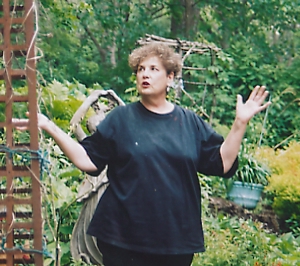
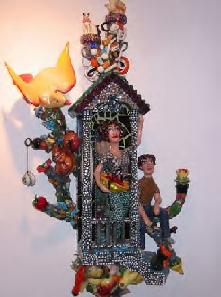
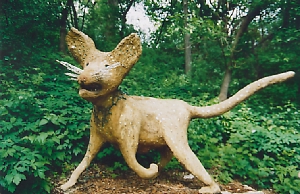
artist Judy Onofrio & Judyland, Rochester, Minnesota

Morning of the second day broke over the phantasmagorical Grotto of the Redemption in West Bend, Iowa. This man made mass of rocks, crystals, stalactites, petrified wood, coral, semiprecious stones, shells and Carrara marble statues is the creation of Father P. M. Dobberstein who started construction in 1912 and continued for 43 years until his death. Most of the material came from what would later become national parks. Try to rebuild this baby today and you will be doing 43 years in the federal pen for theft of national treasures.

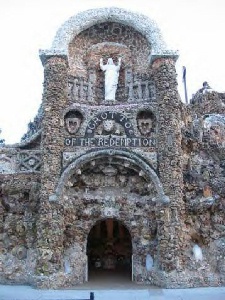
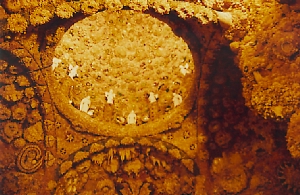
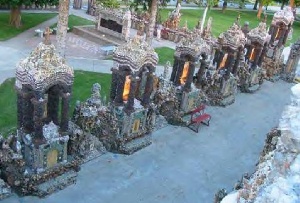
The Grotto of the Redemption, West Bend, IA
Next was Algona, Iowa for a tour of another Louis Sullivan building, The Land and Loan Office (1913). While not on the grand scale of the Owatonna bank (that had an unlimited budget) it shows what Sullivan could do with just a few dollars of the client's money. Along the way we glimpsed hundreds of giant wind turbines spinning in the fields. There was a distinct resemblance to the Martian UFOs from H.G. Wells' War of the Worlds. Then we chowed down on some great grub at the Sour Grapes Bistro in Mason City, Iowa. Following lunch we took a driving tour of the Prairie School Architecture of Mason City, then it was back on the highway to the Bily Clock Museum of Spillville, Iowa. Brothers Frank and Joseph spent the freezing Midwest winters carving incredible wooden clocks from 1913 until 1964. There are clocks with themes including History of Travel, Parade of Nations, Apostles, American Pioneer History, Charles Lindberg and so forth. They all still keep perfect time. As the day was fading we stopped in to visit with chain-saw artist Dan Slaughter of McGregor, Iowa. His yard is filled with hundreds of life-sized carved figures of Elvis, Jolly Green Giant, Betty Boop, Abe Lincoln, space aliens, etc. Participants opened their wallets and we had the company the Tin Man of Oz, Sponge Bob and a girl skipping rope for the balance of the trip.

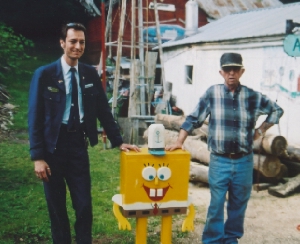
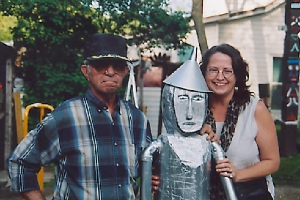
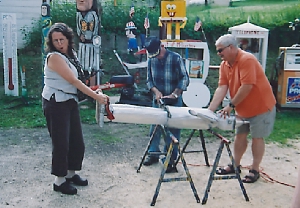
artist Dan Slaughter, McGregor, Iowa

We awoke to a driving rainstorm in Mineral Point, Wisconsin. But it failed to dampen our spirits one iota. We were given a wonderful tour of this historic mining town and then it was off to Spring Green for visit to Frank Lloyd Wright's Taliesin. If you are a FLLW groupie this place is a must. It is ground zero in the legendary story of his life. So much happened here - his youth with the Lloyd Joneses, the murder of his mistress and love of his life, Mamah Borthwick Cheney, creation of the Taliesin Fellowship, redemption, Fallingwater, Johnson Wax headquarters and much much more. This is hallowed ground for legions of his admirers.

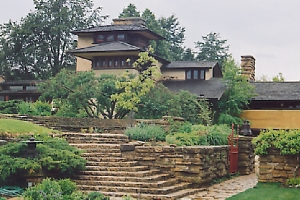
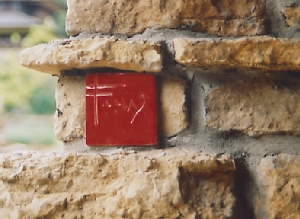
Frank Lloyd Wright's Taliesin, Spring Green, Wisconsin

Then we were off to LaCrosse for a tour of Mary of the Angels Chapel at St. Rose Convent. This is a beautiful sacred space - incredible stained glass from Germany, soaring vaulted dome over the transept, decorated faux marble columns, grand altars and chapels and huge religious paintings. But most interesting is the fact that since August 1, 1878 at least two of the Franciscan Sisters of Perpetual Adoration have prayed in one hour shifts without interruption 24 hours a day, 7 days a week, 365 day a year for 126 years! It was a spiritual visitation to say the least.

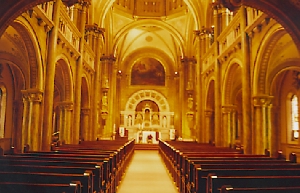
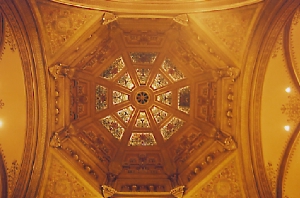
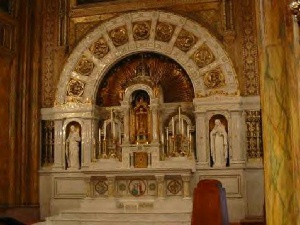
Mary of the Angels Chapel, LaCrosse, Wisconsin

We wrapped up day three at Prairie Moon Garden and Museum near Fountain City. Farmer, fiddler and artist Herman Rusch began building this roadside museum in a dance hall he bought in 1952. In 1958 he started a sculpture park and filled it with concrete figures. First came a whimsical fence that resembles strawberry ice cream cones holding hands. Later came obelisks, buildings, huge vases, a self-portrait, a man fighting a grizzly bear, a giant snake and dinosaurs. We were met at the Garden by Gary Schlosstein, the grandson of self-taught artist Eric Schlosstein, whose miniature buildings are now on display in the Museum.

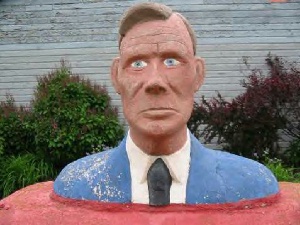
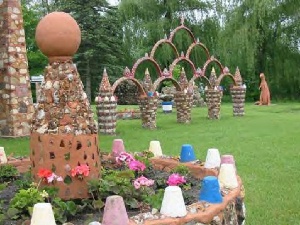
Prairie Moon Garden, near Fountain City, Wisconsin
On the morning of the fourth day we were once again greeted with overcast skies but a little nasty weather wasn't going to stop this bunch. Like the post office our motto includes fearing neither wind nor rain nor snow nor tornados nor hurricanes nor inept docents or getting the bus stuck in the middle of nowhere. We began with a short tour of historic downtown Winona, Minnesota. Unfortunately, it was Sunday and all the stores were closed so our plan to shoplift stuff in honor of the town's most famous citizen came to naught. Even with Larry's skilled planning (Field Marshall Erwin Rommel didn't have to solve this many logistical problems during the entire North African Campaign) not every little detail works out. Our luxury coach crosses the "Mighty Missip" (thankfully we refrained from singing Old Man River) and we are back in Wisconsin heading for Paul and Matilda Wegner's Grotto near the tiny town of Cataract. This peaceful little country site was build by the Wegners between 1929 and 1942. It contains a small chapel, a wedding cake, pulpit, ocean liner, stars, hearts and an American flag. Paul and Matilda used rocks, shells, arrowheads, gunpowder casings, tile, wood, concrete and glass, lots and lots of glass, in the construction of the grotto.

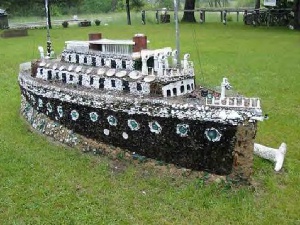
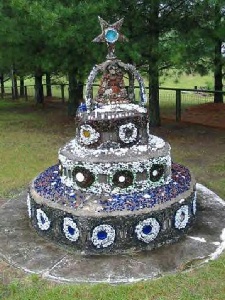
The Wegner Grotto, near Cataract, Wisconsin

Following a light lunch in Wisconsin Rapids (yes, we saw the cataracts) we blast off for Rudolph to see the Rudolph Grotto Gardens and Wonder Cave. Beginning in 1928 and for the next 30 years Father Phillip J. Wagner transformed this barren cornfield into a forest of trees, ferns, ivies, grottos, Stations of the Cross, war memorial and of course the 1/5 of a mile long, above ground, man made Wonder Cave. The latter curves and twists like a mini Carlsbad Caverns. Around each corner are niches containing scenes from the Holy Bible in miniature as well as backlit tin sheets with verses from the Bible punched into them. It's rather surreal. Also at the grotto is Wisconsin in Miniature where for a quarter you can peek through a small window and see a scene from the state's frontier days (complete with tiny Indians, cowboys, etc. all of which seem in bad need of dusting).

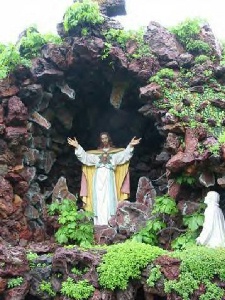
The Rudolph Grotto, Rudolph, Wisconsin

Barreling toward the Canadian border like a busload of senior citizens seeking cheap prescription drugs, we take aim for Wisconsin Concrete Park which modestly bills itself as the "premier museum of self-taught art" and "Wisconsin's extraordinary roadside art attraction." This open-air environment was the creation of Fred Smith, a lumberjack, tavern owner, folk artist and musician. Between 1949 (when he turned 65) and 1964, Smith created over 200 concrete figures (people, horses, wild animals, Indian chiefs, Sun Yat-Sen, a 20-foot long muskie, etc.). Made from wooden frames, wire and, of course, concrete, the artist covered the figures with glass, mirrors, metal and colorful stones. It truly is one of America's premier folk art sites ranking along side The Orange Show, The Watts Towers, Pasaquan and Salvation Mountain. It is a long haul but this is a must see environment.

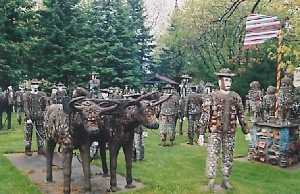
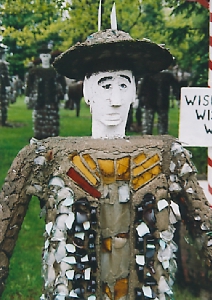
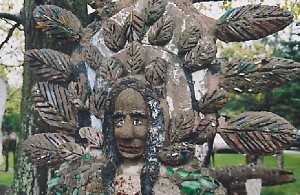
Fred Smith's Wisconsin Concrete Park, Phillips, Wisconsin

The surprise of day four was dinner at Phil & Eleanor's Steakhouse in Medford. Not only was the food outstanding (lazy Susan homemade relish trays, fresh garden salad with a choice of four homemade dressings, 22-ounce roasted Cornish game hen with wild rice and vegetable stuffing, twice baked potatoes, homemade rolls and rhubarb pie with vanilla ice cream and strawberry sauce), Eleanor's constant patter was worth the price of admission. We would sleep well tonight.

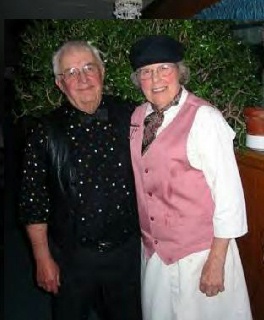
Phil & Eleanor Howarth, Medford, Wisconsin
Day five was blessed with bright sunlight as we headed back to Minneapolis for a visit to Frank Lloyd Wright's Willey House. This commission produced the famous Wright quote "Hosanna! A client!!" The Great Depression and his scandalous private life resulted in him having no business since 1929. But in 1933 Malcolm Willey, a professor at the University of Minnesota wrote Wright asking the great master if he could design a house costing no more than $8,000. Desperate for a commission he accepted the challenge and the granddaddy of the Usonian house was born. What was special about our visit is that the home is under restoration so we got to see how Wright actually constructed the framework. A drive through downtown showcased the Frederick R. Weisman Art Museum (Frank Gehry - 1993), Foshay Tower (1929), IDS Center (Philip Johnson - 1972) and Wells Fargo Center (Cesar Pelli - 1988). Then it was Allen Christian's House of Balls. He is a sculptor who carves old bowling balls into amazing art forms. Allen also is handy with a welding torch, producing wild sculpture, and a plasma cutter that he uses to transform pots and pans into art.

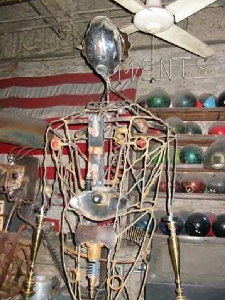
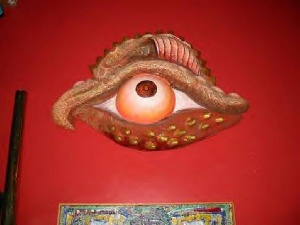
Allen Christian's House of Balls

We also had a surprise visit from a number of art car artists in the area, many of who participate in the Orange Show's Art Car Parade. Our last stop was the famous Minneapolis Sculpture Garden. It is probably best known for its Spoonbridge and Cherry by Claus Oldenburg and Coosje van Bruggen. However, there are great pieces from other famous artists including Alexander Calder, Louise Nevelson, George Segal, Richard Serra, Tony Smith, Henry Moore and Mark di Suvero to mention a few.

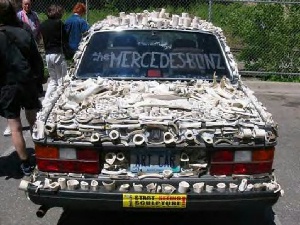
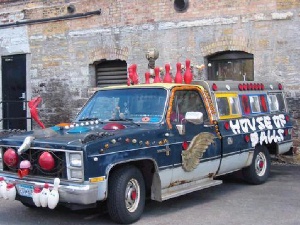
Minneapolis Art Cars

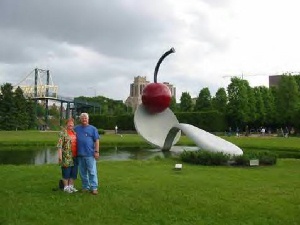
Minneapolis Sculpture Garden

So to quote Bugs Bunny 'that's all folks." All of us who participated owe Larry a huge round of kudos for another outstanding Memorial Day Weekend Eyeopener Tour. We know he is already planning the 2005 trip because we saw him scribbling notes on a napkin at the airport listing fantastic things to visit in the Rust Belt. Stay tuned for more details and see you next year.
 All photos by Larry Harris and Tom LaFaver
All photos by Larry Harris and Tom LaFaver
back to more roadtrips
back to the home of NarrowLarry




![]()









![]()










![]()







![]()




